-
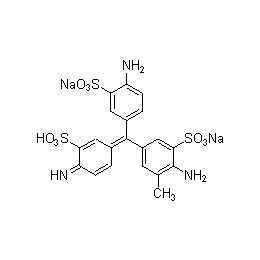 Acid Fuchsin, C.I. 42685, certifiedCatalog Number 24991
Acid Fuchsin, C.I. 42685, certifiedCatalog Number 24991Acid Fuchsin is one of the dyes used in the Masson's Trichrome Staining technique. This method is commonly used to stain tissue sections in the Histology and Cytology Laboratory in order to distinguish muscle from collagen. The muscle stains red with the acid fuchsin and the collagen is stained green or blue with light green SF yellowish or methyl blue.
-
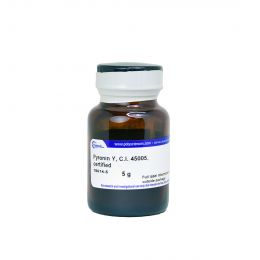 Pyronin Y, C.I. 45005, certifiedCatalog Number 18614
Pyronin Y, C.I. 45005, certifiedCatalog Number 18614Used in combination with methyl green for the selective and differential staining of nucleic acids. The pyronin Y stains RNA red, while the methyl green stains DNA green. The combined methyl green-pyronin Y stain is a useful histochemical reagent. Pyronin Y can also be used as a tracking dye for polyacrylamide gel electrophoresis.
λmax 552nm
-
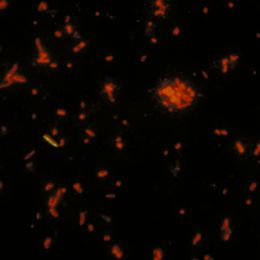 Acridine orange, C.I. 46005 (min. 95%)Catalog Number 04539
Acridine orange, C.I. 46005 (min. 95%)Catalog Number 04539DNA intercalating dye. A grade of acridine orange of exceptionally high purity, suitable for quantitative work. Free of inorganic salts. A specific stain for RNA, used as a 2% solution containing 1% lanthanum acetate in 15% acetic acid.
-
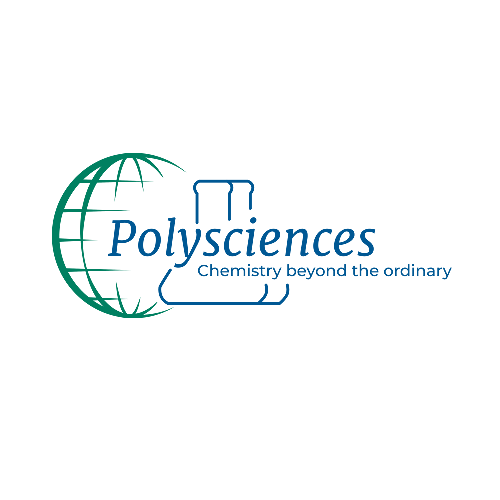 Oil Red O, C.I. 26125, certifiedCatalog Number 06317
Oil Red O, C.I. 26125, certifiedCatalog Number 06317A post-electrophoresis stain for lipoproteins on cellulose acetate plates.
(Solvent red 27; Sudan red 5B; Ceres red 5B)
-
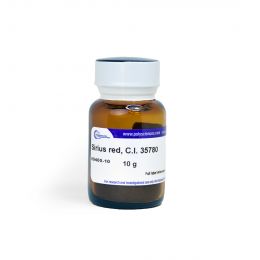 Sirius red, C.I. 35780Catalog Number 09400
Sirius red, C.I. 35780Catalog Number 09400Cardiac muscle stain.
(Direct red 80)
-
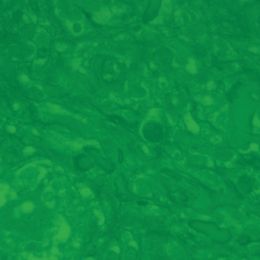 Fast green FCF, C.I. 42053, certifiedCatalog Number 02745
Fast green FCF, C.I. 42053, certifiedCatalog Number 02745(Food green 3). Sensitive stain for proteins in polyacrylamide gels. Especially suitable in isoelectric focusing. Also suitable for use as a cytological counterstain, and mammalian tissue stain for muscle and collagen.
λ max 622-626nm.
-
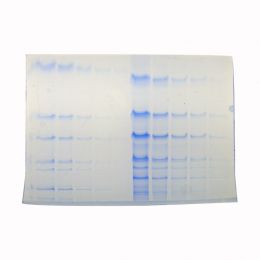 Coomassie® Blue G250, C.I. 42655Catalog Number 03707
Coomassie® Blue G250, C.I. 42655Catalog Number 03707Protein stain for SDS gels. Used in dye binding techniques for protein quantification.
(Coomassie blue® G250; Brilliant blue G250; Acid blue 90)
λmax 610nm
-
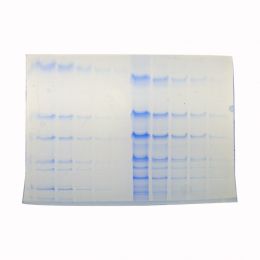 Coomassie® blue R250, C.I. 42660Catalog Number 00352
Coomassie® blue R250, C.I. 42660Catalog Number 00352Rapid acting and sensitive dye for SDS gels.
(Coomassie blue® R250; Brilliant blue R250; Acid blue 83)
λmax 588nm
-
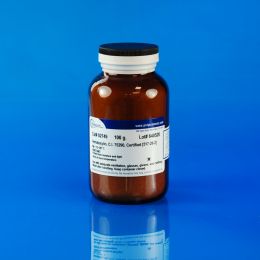 Hematoxylin, C.I. 75290, certified (Natural black 1)Catalog Number 02749
Hematoxylin, C.I. 75290, certified (Natural black 1)Catalog Number 02749Nuclear protein stain and glycogen stain. Also a general tissue stain for human, animal and VIR histology.
-
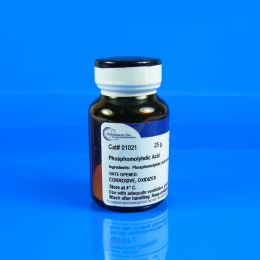 Phosphomolybdic acid hydrate, ACS gradeCatalog Number 01021
Phosphomolybdic acid hydrate, ACS gradeCatalog Number 01021Electron dense metal stain.
(12-Molybdophosphoric acid)
-
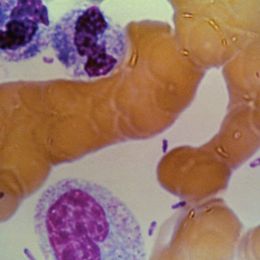 Wright Stain, certified by the Biological Stain CommissionCatalog Number 02785
Wright Stain, certified by the Biological Stain CommissionCatalog Number 02785Useful for staining blood films and malarial parasites in blood films.
-
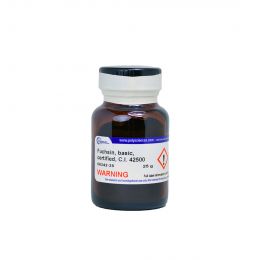 Fuchsin, basic, certified, C.I. 42500Catalog Number 06342
Fuchsin, basic, certified, C.I. 42500Catalog Number 06342For staining bacilli in tissue. Coupling agent for ultrastructural localization of esterases.
(Pararosaniline hydrochloride; Basic red 9) λ max 542-548nm
-
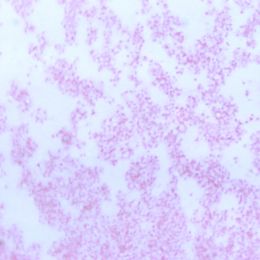 Safranin O, C.I. 50240, certifiedCatalog Number 02782
Safranin O, C.I. 50240, certifiedCatalog Number 02782A general biological stain. Used as a nuclear stain for histological studies. Also used as a cationic lipophilic probe and in the detection of glycosaminoglycans and proteoglycans.
(Basic red 2; 3,7-Diamino-2,8-dimethyl-5-phenylphenazinium chloride) λ max 530nm.
-
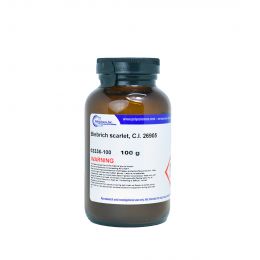 Biebrich scarlet, C.I. 26905Catalog Number 03336
Biebrich scarlet, C.I. 26905Catalog Number 03336Widely used as a counterstain. Also, useful plasma stain.
(acid red 66; Ponceau B) λ max 505nm
-
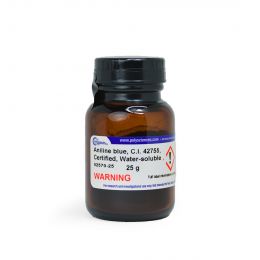 Aniline blue, C.I. 42755, Certified, Water-solubleCatalog Number 02570
Aniline blue, C.I. 42755, Certified, Water-solubleCatalog Number 02570Used as contrast stain in histology and cytology and as a pH indicator (pH 10.0-13.0). Used with acid fuchsin as Mallory’s connective tissue stain. Also used to visualize chromosomes and cellulose wall implants. (Acid blue 22).
-
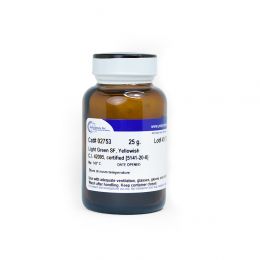 Light green SF yellowish, C.I. 42095, certifiedCatalog Number 02753
Light green SF yellowish, C.I. 42095, certifiedCatalog Number 02753Used as a dye and as a biological stain. Certified for use as a counterstain in cytology. An important contrast stain for plasma as a critical component of Papanicolaou (PAP) stains. Stains collagen fibers when substituted for aniline blue in Masson’s trichrome.
λ max 630(422)nm
-
 Chlorazole black E, C.I. 30235, certifiedCatalog Number 02730
Chlorazole black E, C.I. 30235, certifiedCatalog Number 02730A valuable stain in general histology and cytology. Gives sharp, clear-cut pictures of both nuclei and cytoplasmic structures. Also useful for differentiation of fungi.
-
 Nuclear fast red, C.I. 60760Catalog Number 09773
Nuclear fast red, C.I. 60760Catalog Number 09773Nuclear fast red staining is a simple method of nuclear chromatin staining and is mainly used for high-contrast counterstaining for histological applications.
-
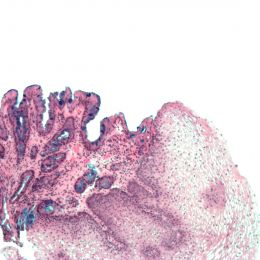 Alcian Blue 8GX, C.I. 74240Catalog Number 19175
Alcian Blue 8GX, C.I. 74240Catalog Number 19175Used primarily for demonstrating acid mucopolysaccarides with Scott's method and Mowry's staining methods. Used in electrophoresis for detecting glycoproteins.
-
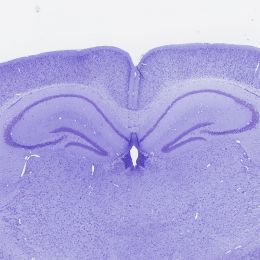 Cresyl violet acetate, certifiedCatalog Number 21063
Cresyl violet acetate, certifiedCatalog Number 21063(9-Amino-5-imino-5H-benzo[a]phenoxazine acetate salt) Cresyl Violet Acetate is a certified solid dye used for the preparation of a staining solution to demonstrate the presence of Nissl substances in neurons and cell nuclei.
-
 Sudan Black B, C.I. 26150, CertifiedCatalog Number 25008
Sudan Black B, C.I. 26150, CertifiedCatalog Number 25008Sudan Black B is useful for staining neutral triglycerides and lipids on frozen sections and some lipoproteins on paraffin sections.
-
 Rose Bengal, C.I. 45440, CertifiedCatalog Number 25005Inquire for availability.Phone: 1(800)523-2575Email: [email protected]
Rose Bengal, C.I. 45440, CertifiedCatalog Number 25005Inquire for availability.Phone: 1(800)523-2575Email: [email protected]Rose Bengal can be used as an alternative to phloxine B in Kreyberg's stain for keratin and mucus. Useful for detecting bacteria in soil.
-
 Orange G, C.I. 16230, certifiedCatalog Number 00968
Orange G, C.I. 16230, certifiedCatalog Number 00968Mallory’s stain for collagen in connective tissue. Also useful as a stain for granules, elastic fibers, mast cells, and pollen tubes. A general histology and cytology counterstain.
Acid orange 10; Xylene fast orange G; 7-Hydroxy-8-phenylazo-1,3-naphthalenedisulfonic acid λmax 475nm.
-
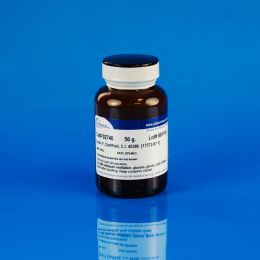 Eosin Y, C.I. 45380, certifiedCatalog Number 02740
Eosin Y, C.I. 45380, certifiedCatalog Number 02740Cytoplasmic counterstain. Component of Wright stain and Tetrachrome stain.
(Eosin yellowish; Acid red 87; 2’,4’,5’,7’-Tetrabromo-fluorescein, disodium salt)
λmax: 517nm
-
 Congo red, C.I. 22120, certified (Direct red 28)Catalog Number 02736
Congo red, C.I. 22120, certified (Direct red 28)Catalog Number 02736Anionic metachromatic dye. Good contrast stain or counterstain. Specific stain for amyloids in pathology. Also, a pH indicator; transition interval: pH 3.0 (blue) to 5.0 (red).
λ max: 497nm
-
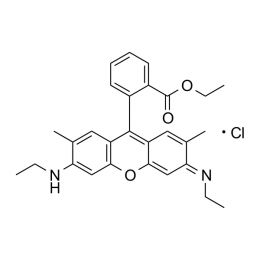 Rhodamine 6G, C.I. 45160Catalog Number 25004Inquire for availability.Phone: 1(800)523-2575Email: [email protected]
Rhodamine 6G, C.I. 45160Catalog Number 25004Inquire for availability.Phone: 1(800)523-2575Email: [email protected]Used as a tracer dye within water to determine the rate and direction of flow and transport.
-
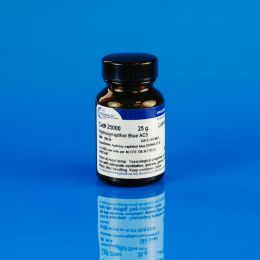 Hydroxynapthol Blue, ACSCatalog Number 25000
Hydroxynapthol Blue, ACSCatalog Number 25000Hydroxynapthol Blue is suitable for calcium determinations.
-
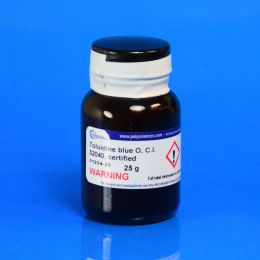 Toluidine blue O, C.I. 52040, certifiedCatalog Number 01234
Toluidine blue O, C.I. 52040, certifiedCatalog Number 01234A metachromatic, cationic thiazine dye that is widely used in in vitro biological applications. It has also been used in techniques for DNAase detection.
λmax 626nm
-
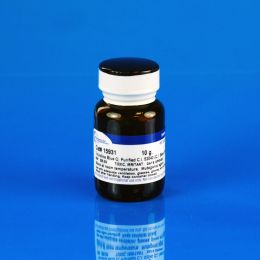 Toluidine blue O, C.I. 52040, purifiedCatalog Number 15931
Toluidine blue O, C.I. 52040, purifiedCatalog Number 15931Useful for staining RNA, oligodeoxynucleotides, proteins and glycosaminoglycans.
λ max 626nm.
Assay >60% anhydrous dye.
-
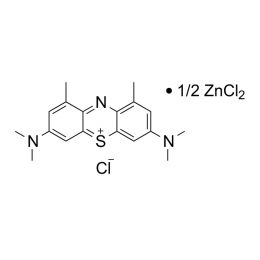 1,9-dimethyl methylene blue zinc chloride double salt (DMMB)Catalog Number 03610
1,9-dimethyl methylene blue zinc chloride double salt (DMMB)Catalog Number 03610(Taylor’s blue; 3,7’-Bis(dimethylamino)-1,9-dimethyldiphenothiazin-5-ium chloride) λ max 649nm
Used in dye binding assays for glycosaminoglycans.
Certified Dyes & Stains
